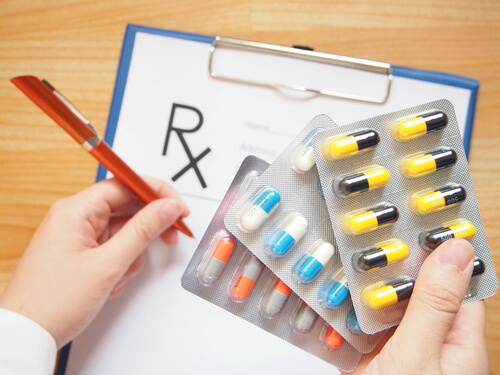Stimulants and depressants are often discussed together, as these are two easy ways to classify most drugs of abuse, as well as many prescription drugs. When looking at uppers vs. downers, there are many differences, but also plenty of similarities. Anyone using these substances medically or recreationally must understand how downers and uppers compare and the risks of combining them.
Learn About How Stimulants And Depressants Differ:
What Is The Difference Between Stimulants And Depressants?
Stimulants and depressants are among the most commonly abused types of drugs. Because they are frequently discussed together, not everyone understands the difference between stimulants and depressants. In essence, this comes down to how they impact the central nervous system. Stimulants increase its activity; depressants reduce it.
Both depressants and stimulants are made as prescription medications and street drugs. Examples of uppers and downers include:
Stimulants:
Depressants:
It is important to note that even if someone has a prescription for a depressant or stimulant, there is still a risk of abuse and developing an addiction.
Uppers And Downers Mechanism Of Action
Mechanism of action describes how stimulants work and how depressants work. Essentially, this explains the specific effects these medications have on the body. The MOA is central to both the therapeutic benefits of stimulants and depressants and the highs they can produce.
MOA In Different Body Systems
Both downers and uppers primarily interact with the central nervous system. Uppers impact the CNS by stimulating it or making it more active. Downers inhibit the actions of the CNS. Through their impact on the CNS, both stimulants and depressants impact other bodily systems.
For example, interacting with the cardiac system, uppers will cause the heart rate to accelerate and the blood pressure to rise. With depressants, the effect is the exact opposite. The cardiac system will slow, resulting in a slower pulse and lower blood pressure. They also both impact the digestive system; stimulants increase metabolism and even cause diarrhea, while depressants slow things down, making it easier to gain weight and experience constipation.
However, stimulants are not likely to change the respiratory system. Yet this is an effect of downers. In fact, respiratory depression is often the greatest risk associated with depressant use.
MOA In The Brain
The core of the MOA of both stimulants and depressants is in the brain. Stimulants usually increase the activity of the brain chemicals dopamine and norepinephrine. In general, depressants increase the activity of gamma-aminobutyric acid (GABA), a chemical that inhibits brain activity. However, because each drug is different, their effects on brain chemicals can vary.
Uses Of Stimulants And Depressants
Also, important to understand when looking at stimulants vs. depressants is how their uses differ. Both stimulants and depressants are found in prescription form and have medical applications. In some cases, these overlap, but most of the time, they diverge. Below, there is a quick comparison of the uses of stimulants and depressants.
| Uppers Uses | Common Uses | Downers Uses |
|---|---|---|
| – ADHD – Narcolepsy – Exogenous obesity – Obstructive sleep apnea – Fatigue |
– Anxiety – Insomnia – Depression – Food-related disorders – Parkinson’s – Bipolar disorder |
– Sedation – Obsessive-compulsive disorder – Acute stress – Muscle spasms – Pain |
Side Effects Of Uppers And Downers
Both uppers and downers are well-known for causing side effects in those who take them. These can range from mild to severe, and in some cases, they can be very dangerous. It is critical that anyone using or abusing these drugs knows what the potential side effects are.
Despite being very different in their actions on the body, stimulants and depressants can have some of the same side effects. However, the unique effects also inherent with each drug class. Below, there is a table distinguishing stimulants and depressants side effects.
| Uppers Side Effects | Common Side Effects | Downers Side Effects |
|---|---|---|
| – Decreased appetite – Weight loss – Increased blood pressure – Nervousness – Tics – Constricted pupils – Hyper-focusing – Diarrhea – Improved reaction time – Improved coordination |
– Dizziness – Moodiness and irritability – Fatigue – Drowsiness – Personality changes – Nausea – Stomachaches – Headaches – Sleep struggles – Reduced inhibitions – Physical dependence |
– Increased appetite – Weight gain – Lowered blood pressure – Extreme relaxation – Dilated pupils – Slowed pulse and respiration – Difficulty concentrating – Reduced reaction time – Poor coordination – Slurred speech – Constipation |
Given the potential risks, users should speak to their doctors whenever they experience stimulants side effects or depressant ones.
Stimulants And Depressants Signs Of Abuse
For loved ones, it is critical that they can recognize the signs of abuse in their friends and family. In some cases, there is a lot of overlap between upper and downer drugs. In other cases, looking at depressants vs. stimulants means observing different signs.
In general, behavioral and psychosocial symptoms are pretty similar. Below are signs that could be observed in those taking either stimulants and depressants:
- lying, stealing, and cheating
- doctor shopping to obtain prescriptions
- looking online for places to buy prescription medications without a prescription
- aggressive or angry outbursts
- risky behaviors
- anxiety
- depression
- mood swings
Some behavior and psychosocial symptoms that differ are:
- Energy: Uppers provide more while downers reduce it
- Motivation: People on uppers tend to become more motivated while those on downers tend to feel the reduced motivation
- Impulse control: Stimulants increase impulsive behaviors while depressants can cause people to struggle with taking any action at all
If any of these symptoms are observed, drug abuse should be considered as a possibility, and treatment should be sought. There are many addiction treatment options available.
Mixing Uppers And Downers
Among addicts, mixing uppers and downers is common. Sometimes this is done to experience two different highs at once, while others will mix the two to recover from one type of high. While this happens frequently, it is not safe.
Is Mixing Uppers And Downers Dangerous?
Mixing stimulants and depressants is absolutely dangerous. While it is easy to reason that using both upper and downer drugs balances each other out, it actually just places twice the stress on the body, pulling it from one extreme to the other. Then there are the potential drug interactions to account for, which can easily lead to an overdose. Abusing these drugs on their own is incredibly risky and potentially deadly; combining them only increases the chances of severe or fatal effects.
Effects Of Mixing Uppers And Downers
Mixing uppers and downers effects are seen in numerous bodily systems, resulting in terrible side effects. Some potential effects of using both stimulants and depressants are:
- Being unaware of the effects of either drug. Combining stimulants and depressants masks the effects of both.
- Feeling motivated to take too much. When the high of both drugs are masked by each other, the user can take more to try to feel something, resulting in an overdose.
- The creation of deadly chemicals within the body. For example, alcohol and cocaine come together to cause the body to produce cocaethylene, which is extremely toxic.
- Stimulants cause dehydration, as do certain depressants. This can result in severe damage to vital organs.
- Stimulants tell the body to increase the pulse while downers tell it to reduce it. This fluctuation can cause dysrhythmias and, ultimately, heart failure.
- Mixing the two types of substances can create an illusion of control. This can make the user feel more confident than they should, resulting in injury.
- Uppers can mask the signs of CNS depression, and downers can mask CNS excitement. As one wears off, the other can kick in and have deadly results.
Patients should not mix stimulants with depressive drugs without medical consultation. Only a doctor can set a prescription schedule and prescribe concurrent use of both. If a patient already uses any stimulants ordered by another doctor, it is important to notify about this current physician prescribing downers.
Getting Help With Stimulants & Depressants Abuse
If someone is abusing stimulants, downers, or both, they need to seek treatment. Drug addiction rehab centers offer programs that allow users to safely and successfully stop their substance abuse. All they need is to find the center that is right for them.
Page Sources
- Prescription Stimulants. National Institute on Drug Abuse. 2018. https://www.drugabuse.gov/publications/drugfacts/prescription-stimulants.
- Panikkath R, Panikkath D. Amphetamine-related ischemic colitis causing gastrointestinal bleeding. Proceedings (Baylor University. Medical Center). 2016; 29(3): 325–326. doi:10.1080/08998280.2016.11929455. https://www.ncbi.nlm.nih.gov/pmc/articles/PMC4900786/.
- Olfson M, Huang C, Gerhard T, et al. Stimulants and cardiovascular events in youth with attention-deficit/hyperactivity disorder. Journal of the American Academy of Child and Adolescent Psychiatry. 2012; 51(2): 147–156. doi:10.1016/j.jaac.2011.11.008. https://www.ncbi.nlm.nih.gov/pmc/articles/PMC3266532/.
More About Stimulants:

 Authored by
Authored by  Reviewed by
Reviewed by 



